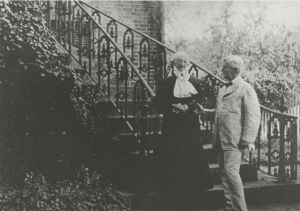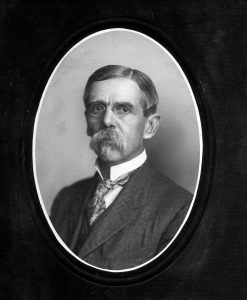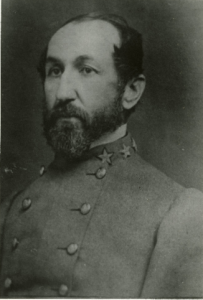
TUSCALOOSA, Ala. — It was a beautiful fall day on The University of Alabama campus in 1880. Josiah Gorgas meandered through rows of library books, making a mental note of what was missing, while his wife, Amelia, stayed busy in their home nursing a few students who had an awful cough.
It was a life the couple had grown accustomed to and one that would be remembered for many years to come.
The Gorgas family, along with numerous others, played a huge role in shaping UA, as well as the community and state. On April 25, visitors will have an opportunity to “interact” with several of these individuals during the University’s first Living History Festival.
Hosted by the Alabama Museum of Natural History and the Gorgas House Museum, the event will allow participants an opportunity to travel through time as they tour several significant buildings on campus.
Through guided tours, visitors will learn from fascinating figures who have earned their spot in Alabama’s history.
“Our museums have a lot of history,” said Jeff Hirschy, a UA graduate assistant at Hoole Special Collections Library. Hirschy portrays John Milner, a famous railroad engineer, at the annual fall history tour at Oak Hill Cemetery in Birmingham. His involvement in that tour led to the idea of doing something similar on UA’s campus.
“(This tour is) a way for people to celebrate local history and gain a new understanding of who and where we came from,” said Allie Sorlie, education and outreach coordinator for UA’s Alabama Museum of Natural History.
Tour participants will begin their trek through time at Smith Hall. Constructed in 1910, Smith Hall, along with Morgan Hall and B.B. Comer, reflect the Beaux-Arts style of architecture popular in the early 20th century. This style was used to represent, on a smaller scale, the grandiose national history museums built in Chicago, New York and Washington.

Smith Hall was named for Eugene Allen Smith, and it is here that visitors will meet the former UA professor and State Geologist. In addition to its namesake, Smith Hall was home to numerous figures who played a key role in discovering Alabama’s physical structure and history, and tour participants will have an opportunity to discover this piece of time gone by in a very real way.
They’ll hear Sylacauga resident Ann Elizabeth Hodges talk about the night she was hit by a meteorite while sleeping on her sofa, and learn how one of the first naturalists, William Bartram, explored and cataloged the natural surroundings of the American Southeast.
They will have a deeper understanding of where some of the Alabama Museum of Natural History’s first collections came from after talking with Alabama’s first State Geologist Michael Tuomey, and delve deeper into the state’s oil and gas exploration while hearing from Winnie McGlamery, one of the few women scientists in the field of paleontology at the time.
Finally, tour participants will have an opportunity to question the founder of the Jones Museum at Moundville Archaeological Park about his involvement in the first large-scale, ongoing scientific excavation of Moundville.
From Smith Hall, the tour continues its exploration into history as participants are led to the Gorgas House Museum, learning about Morgan Hall, Tuomey Hall, the ROTC Building, Amelia Gayle Gorgas Library, Round House, Clark Hall, Manly Hall, Garland Hall and Oliver-Barnard Hall along the way.
Once arriving at the Gorgas House, which was the first building built and the only building left from the original campus, visitors will see the Gorgas family up close and personal.
 They’ll talk to General Josiah Gorgas, who served as the University of Alabama’s president in 1878, followed by the University’s librarian, and then watch as his wife, Amelia Gorgas, the first female librarian on the University campus, as well as University nurse matron and the first postmistress of the University, sorts through campus mail.
They’ll talk to General Josiah Gorgas, who served as the University of Alabama’s president in 1878, followed by the University’s librarian, and then watch as his wife, Amelia Gorgas, the first female librarian on the University campus, as well as University nurse matron and the first postmistress of the University, sorts through campus mail.
After interacting with the couple, participants will meet their son, General William Crawford Gorgas, and learn of his fascinating adventures while serving as the sanitary expert for the Panama Canal project, improving conditions in hospitals and army camps during World War I and traveling the globe to eradicate yellow fever after the war.
Tours will run every 30 minutes from 1 to 4 p.m. Saturday, April 25. Tickets can be purchased on that day at Smith Hall for $4 per person.
“I am very excited about the Gorgas Family coming to life,” said Lydia Ellington, Gorgas House Museum director. “I believe it will provide a new avenue for people to learn the history of the University in a new and entertaining way.”
Contact
Kim Eaton, UA media relations, 205/348-8325, kkeaton@ur.ua.edu